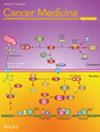Although the global burden of lung cancer has generally declined in recent decades, the variation in onset age-related trends remains insufficiently explored. In the current study, we aimed to systematically evaluate the most update temporal trends in incidence, mortality and DALYs of early, middle, and late-onset lung cancer (EOLC, MOLC, and LOLC) from 1990 to 2021, with stratifications of gender, location, and socio-demographic development.
We retrieved cross-sectional data from the Global Burden of Diseases, Injuries, and Risk Factors Study (GBD) 2021. The global, regional, and national burden of lung cancer from 1990 to 2021 was evaluated primarily by age-standardized rates of incidence (ASIR), mortality (ASMR), and DALYs (ASDR). Joinpoint regression analysis was employed to assess temporal trends and turning point years. Frontier analysis was applied to examine the lowest achievable DALYs, and cross-country inequalities were evaluated sing the slope index of inequality (SII) and concentration index. We also forecasted the burden from 2022 to 2035.
The global ASIR of EOLC decreased from 4.81 per 100,000 in 1990 to 3.13 in 2021 (AAPC: −1.38, 95% confidence interval [CI]: −1.53 to −1.22, p < 0.001), with a steeper decline in males (AAPC: −1.79) compared to females (AAPC: -0.63). MOLC incidence also declined from 92.77 to 72.47 per 100,000 (AAPC: -0.81, 95% CI: −0.9 to −0.73, p < 0.01), while LOLC demonstrated a slight increase from 195.39 to 225.8 per (AAPC: 0.43, 95% CI: 0.37 to 0.5, p < 0.01). Notably, LOLC in females showed a consistent rise in incidence rate (AAPC: 1.13, 95% CI: 1.05 to 1.21, p < 0.01). In contrast to EOLC and MOLC, 11, 10, and 9 out of 21 GBD regions showed a rising trend for ASIR, ASMR, and ASDR of LOLC, respectively. East Asia showed the steepest increase in ASIR (from 229.26 in 1990 to 375.90 in 2021, AAPC = 1.6, 95% CI: 1.31 to 1.89, p < 0.001) of LOLC. Moreover, according to socio-demographic index (SDI) quintiles, the middle SDI region demonstrated the largest rise in ASIR of LOLC. Frontier analysis revealed that countries with higher SDIs had a greater capacity for reducing lung cancer burdens. Cross-country inequalities of lung cancer burden in females were found to improve much slower than in males. The projections implied that, although lung cancer would generally decline in the next decade, the incidence, mortality, and DALY rates of LOLC in females might remarkably increase.
The global incidence, mortality, and DALY rates of lung cancer showed a general decline from 1990 to 2021. However, concerning trends of LOLC burden, especially among females and in specific regions or countries, were observed in this study. This study could help to guide more targeted prevention and intervention strategies for lung cancer control.



